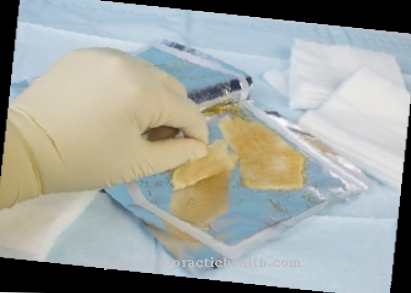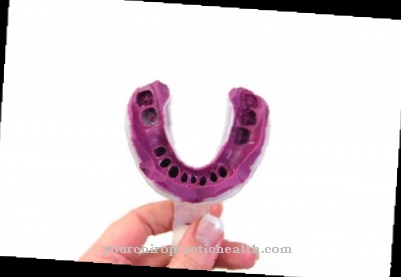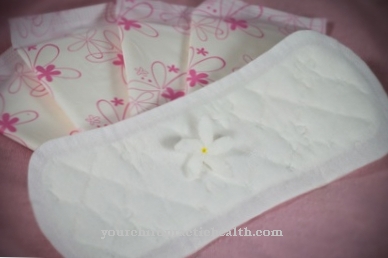As Breast milk substitute or Bottled food is called artificial baby food that is intended to completely replace breast milk. With the current state of research, it is possible to feed an infant with bottle formula from birth and to refrain from breastfeeding.
What is breast milk substitute?

Breast milk substitute in the form of bottle feeding is an alternative nutrition for infants, babies and toddlers from birth. It is a powdered or ready-made mixture that is mixed with water and given to the baby as the only or accompanying source of food.
Bottle feeding can be given from birth to infancy. Artificially produced breast milk substitutes must be adapted to the age and nutritional needs of the child, so that the composition can vary greatly depending on the age of the child.
In principle, breastfeeding is always the better option to feed a baby, according to the recommendation of the World Health Organization. However, if the mother cannot or does not want to breastfeed her baby, she can switch to breast milk substitute at any time, usually without major problems, and feed her baby in this way.
Shapes, types & types
Since some babies need breast milk substitutes from their first day of life, there are so-called PRE food especially for newborns and small infants. This contains practically all of the nutrients that are also found in breast milk. Breast milk substitute in the PRE form does not yet contain any highly satiating substances, only the essential nutrients. As soon as the infant is no longer full of this type of bottle food alone, it should be switched to the next level.
The bottle feeding that follows is sometimes very different. There are variations with and without starch to buy: Starch has a satiating effect, but must be tolerated by the baby. Most manufacturers offer a total of 3 levels of breast milk substitute after the PRE level, some of which contain more and some less starch and accordingly more or less satiate.
In addition, breast milk substitute products differ in their dosage form. In particular, the lower levels for infants and small babies can often be bought ready-made, while the powder variant is also available for mixing.
Structure & functionality
Breast milk substitutes are sold in dosage forms that are easy to prepare or that can be given to the baby without further processing. Bottled formula as powder is mixed with a certain amount of hot water, which the manufacturer of the breast milk substitute specifies. The water should be around body temperature, as breast milk is similarly warm and the baby accepts the food best at this temperature. When preparing powdered food, it is also important that it does not contain any lumps. Ready-made breast milk substitutes in liquid form can be warmed up and offered to the baby without further preparation.
Every breast milk substitute contains the nutrients and components that can also be found in breast milk as well as possible. What is missing in bottle feeding, however, are the immune substances that only the mother's body can give to the baby - they cannot be found in artificial food. It is therefore recommended even to mothers who cannot or do not want to breastfeed to give their baby at least the first portion of breast milk immediately after the birth, as this contains a particularly large number of important immune substances. Then you can switch to the appropriate bottle feeding and the baby still enjoys good immune protection.
From the stage in which starch is added to the breast milk substitute, it again differs more from breast milk. The differences can be seen, for example, in the fact that bottle babies need the bottle far less than a nursing baby has to be put on, because they stay full longer.
Medical & health benefits
The World Health Organization generally recommends breastfeeding for as long as the mother can and as long as the child can be full of it alone. Nevertheless, it is sometimes not possible for medical reasons, be it through drug treatment of the breastfeeding mother or just because she no longer wants to.
While in some cases it is still possible to express the milk using a breast pump, the baby needs replacement food if it can no longer get breast milk, if it is insufficient or if there are breastfeeding problems.
Breast milk substitutes were considered a great achievement of modernity when it was first launched because it significantly increased the life expectancy of babies and decreased the death rate for reasons that are now unnecessary. While bottle feeding still ensures the nutrition of many babies today, it also gives the mother the freedom to decide whether she wants to breastfeed at all and for how long. If you have problems breastfeeding, nothing stands in the way of switching to breast milk substitutes.
Nowadays, no mother has to go without important antibiotics or, in certain cases, even more important treatments such as chemotherapy, because the nutrition of her child is guaranteed by the substitute. The switch to bottle feeding should still be done in consultation with the pediatrician, especially if breastfeeding has already been carried out before.

















.jpg)







.jpg)


